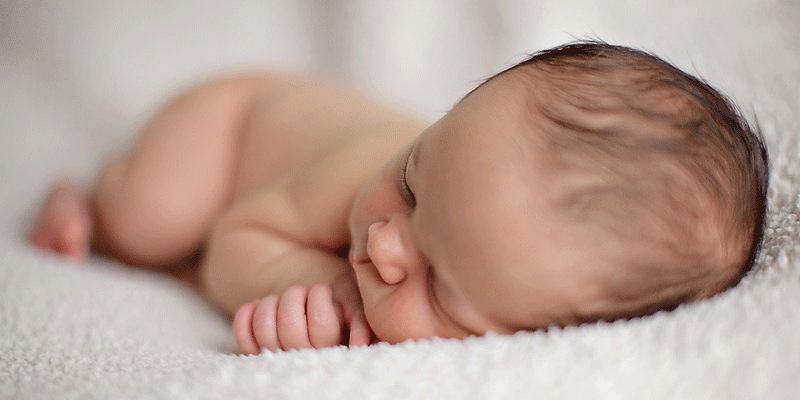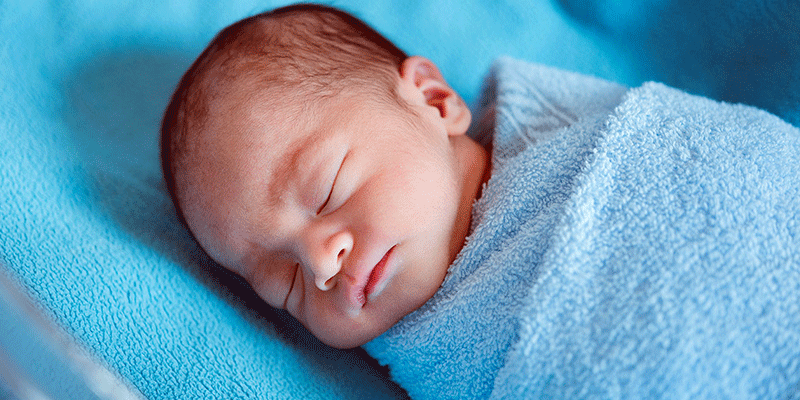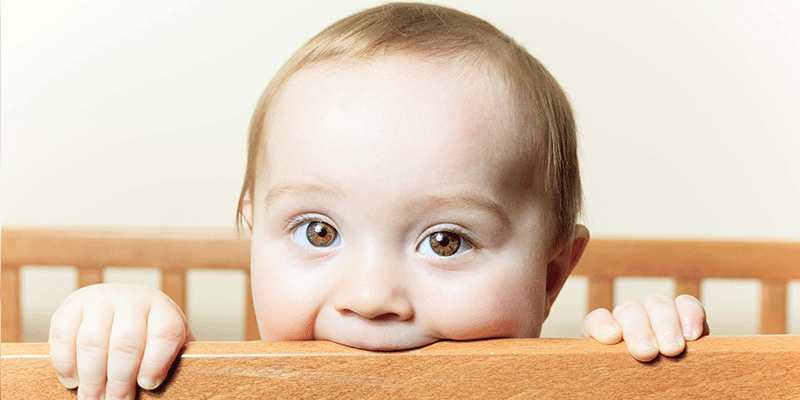
As you get to know your baby, you’ll soon realize that there are times when she’s very alert and active, times when she’s watchful but rather passive, and times when she’s tired and irritable. You may even try to schedule your daily activities to capitalize on her “up” times and avoid overextending her during the “down” periods. Don’t count on this schedule, however. These so-called states of consciousness will change dramatically in this first month.
There are actually six states of consciousness through which your baby cycles several times a day. Two are sleep states; the others are waking states.
State 1 is deep sleep, when the baby lies quietly without moving and is relatively unresponsive. If you shake a rattle loudly in her ear, she may stir a little, but not much. During lighter, more active sleep (State 2), the same noise will startle her and may awaken her. During this light sleep, you also can see the rapid movements of her eyes beneath her closed eyelids. She will alternate between these two sleep states, cycling through both of them within a given hour. Sometimes she’ll retreat into these sleep states when she’s over stimulated, as well as when she’s physically tired.
As your baby wakes up or starts to fall asleep, she’ll go through State 3. Her eyes will roll back under drooping eyelids and she may stretch, yawn, or jerk her arms and legs. Once awake, she’ll move into one of the three remaining states. She may be wide awake, happy, and alert but relatively motionless (State 4). Or she may be alert, happy, and very active (State 5). Or she may cry and flail about (State 6).
If you shake a rattle by your baby’s ear when she’s happy and alert (States 4 and 5), she’ll probably become quiet and turn her face to look for the source of this strange sound. This is the time when she’ll appear most responsive to you and the activity around her, and be most attentive and involved in play.
In general, it’s a mistake to expect much attention from a baby who is crying. At these times, she’s not receptive to new information or sensations; what she wants instead is to be comforted. The same rattle that enchanted her when she was happy five minutes earlier will only irritate her and make her more upset when she’s crying. As she gets older, sometimes you may be able to distract her with an attractive object or sound so that she stops crying, but at this young age, the best way to comfort her usually is to pick her up and hold her.
As your baby’s nervous system becomes more developed, she’ll begin to settle into a pattern of crying, sleeping, eating, and playing that matches your own daily schedule. She still may need to eat every three to four hours, but by the end of the month she’ll be awake for longer periods during the day and be more alert and responsive at those times.
Your Baby’s States of Consciousness
State Description What Your Baby Does
State 1 Deep Sleep Lies quietly without moving
State 2 Light Sleep Moves while sleeping; startles at noises
State 3 Drowsiness Eyes start to close; may doze
State 4 Quiet Alert Eyes open wide, face is bright; body is quiet
State 5 Active Alert Face and body move actively
State 6 Crying Cries, perhaps screams; body moves in very disorganized ways
Last Updated 11/2/2009
Source Caring for Your Baby and Young Child: Birth to Age 5 (Copyright © 2009 American Academy of Pediatrics)
The information contained on this Web site should not be used as a substitute for the medical care and advice of your pediatrician. There may be variations in treatment that your pediatrician may recommend based on individual facts and circumstances.






